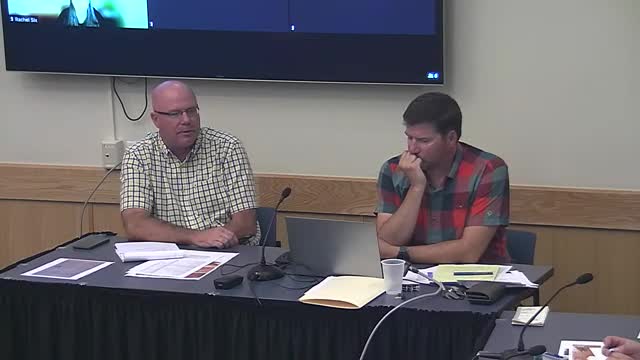Flood Insurance Requirements Spark Concerns Over Endangered Species
August 28, 2024 | Klamath County, Oregon
This article was created by AI summarizing key points discussed. AI makes mistakes, so for full details and context, please refer to the video of the full meeting. Please report any errors so we can fix them. Report an error »

During a recent government meeting, discussions centered on the implications of floodplain mapping and insurance requirements for homeowners, particularly those with federally backed mortgages. Participants highlighted that mortgage companies typically notify homeowners if their property is located within a floodplain, necessitating the purchase of flood insurance. This insurance is mandatory for the duration of the mortgage if the property falls within a special flood hazard area.
The conversation also touched on the rising trend of private flood insurance in Oregon, with estimates suggesting that 15 to 20% of flood insurance policies are now held with private companies, as opposed to the National Flood Insurance Program (NFIP). The average cost of an NFIP policy was discussed, with estimates around $1,200 annually, although participants acknowledged the need for confirmation from FEMA's floodplain insurance staff.
A significant point raised was the distinction between flood insurance and standard homeowners insurance, which does not cover flood events. This clarification is crucial for homeowners who may mistakenly believe their regular policy provides adequate coverage.
Additionally, the meeting explored the potential impact of flooding on agricultural lands, with some participants noting that flooding can be beneficial for certain farming practices during specific seasons. However, concerns were raised about the restrictions on building homes in flood-prone areas.
A notable environmental concern was the potential designation of floodplain areas as spawning grounds for endangered salmon and sucker fish in the Klamath River. Participants expressed uncertainty about how this designation would affect land use and development, emphasizing the need for clear guidance on the matter, especially given the legal protections surrounding endangered species.
Overall, the meeting underscored the complexities of floodplain management, insurance requirements, and environmental considerations, highlighting the need for ongoing dialogue and clarity among stakeholders.
The conversation also touched on the rising trend of private flood insurance in Oregon, with estimates suggesting that 15 to 20% of flood insurance policies are now held with private companies, as opposed to the National Flood Insurance Program (NFIP). The average cost of an NFIP policy was discussed, with estimates around $1,200 annually, although participants acknowledged the need for confirmation from FEMA's floodplain insurance staff.
A significant point raised was the distinction between flood insurance and standard homeowners insurance, which does not cover flood events. This clarification is crucial for homeowners who may mistakenly believe their regular policy provides adequate coverage.
Additionally, the meeting explored the potential impact of flooding on agricultural lands, with some participants noting that flooding can be beneficial for certain farming practices during specific seasons. However, concerns were raised about the restrictions on building homes in flood-prone areas.
A notable environmental concern was the potential designation of floodplain areas as spawning grounds for endangered salmon and sucker fish in the Klamath River. Participants expressed uncertainty about how this designation would affect land use and development, emphasizing the need for clear guidance on the matter, especially given the legal protections surrounding endangered species.
Overall, the meeting underscored the complexities of floodplain management, insurance requirements, and environmental considerations, highlighting the need for ongoing dialogue and clarity among stakeholders.
View full meeting
This article is based on a recent meeting—watch the full video and explore the complete transcript for deeper insights into the discussion.
View full meeting
